 Not long ago, I was provided with the opportunity to present a webinar for Firehouse. The webinar was sponsored by Scott Safety. The program addressed the situational awareness/accountability connection. Thank you to Firehouse and Scott Safety for the opportunity to discuss this important topic.
Not long ago, I was provided with the opportunity to present a webinar for Firehouse. The webinar was sponsored by Scott Safety. The program addressed the situational awareness/accountability connection. Thank you to Firehouse and Scott Safety for the opportunity to discuss this important topic.
Situational Awareness Defined
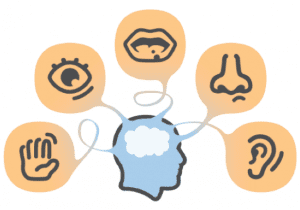 Situational awareness is an individual’s ability to perceive and understand what is happening in their environment – in the context of how time is passing – and then be able to make accurate predictions of future events in time to avoid bad outcomes. Let’s break this definition down and examine its essential components.
Situational awareness is an individual’s ability to perceive and understand what is happening in their environment – in the context of how time is passing – and then be able to make accurate predictions of future events in time to avoid bad outcomes. Let’s break this definition down and examine its essential components.
Perception
 Perception is a mechanical process where nerves gather information – seeing, hearing, feeling, tasting and smelling. This is where situational awareness begins. Absent any perception of what is happening, it would be very difficult to understand what is happening.
Perception is a mechanical process where nerves gather information – seeing, hearing, feeling, tasting and smelling. This is where situational awareness begins. Absent any perception of what is happening, it would be very difficult to understand what is happening.
Understanding
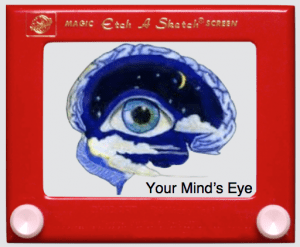 Once the nerves gather data, it turns the data into electrical impulses and sends it down neural pathways for evaluation. The five senses send information down separate pathways. At some point, the information is assembled into one coherent picture of understanding – or so we hope. When the picture is accurate, you can say you understand –or comprehend – what is happening around you.
Once the nerves gather data, it turns the data into electrical impulses and sends it down neural pathways for evaluation. The five senses send information down separate pathways. At some point, the information is assembled into one coherent picture of understanding – or so we hope. When the picture is accurate, you can say you understand –or comprehend – what is happening around you.
Prediction
 Once understanding is formed, it is time to forecast future events. Predictions are based on the information gathered during perception and the understanding of that information. The brain also taps into past training and experiences to aid prediction. All of this helps the imagination “see” future events in the mind before they happen.
Once understanding is formed, it is time to forecast future events. Predictions are based on the information gathered during perception and the understanding of that information. The brain also taps into past training and experiences to aid prediction. All of this helps the imagination “see” future events in the mind before they happen.
The Benefits of Accountability
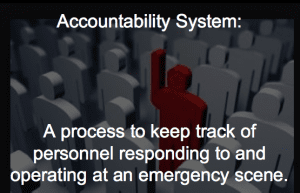 During my webinar I speak about the benefits of using an accountability system to keep track of personnel. I’m not going to go into detail here. Rather, I am simply going to list the benefits. I’m not saying this is an exhaustive list, but it does provide some good reasons to track personnel operating at an emergency scene:
During my webinar I speak about the benefits of using an accountability system to keep track of personnel. I’m not going to go into detail here. Rather, I am simply going to list the benefits. I’m not saying this is an exhaustive list, but it does provide some good reasons to track personnel operating at an emergency scene:
1. Keeps track of how many personnel are operating at an emergency scene.
2. Keeps track of crew sizes and crew integrity (making sure the crew is staying together).
3. Keeps track of where crews are operating.
4. Keeps track of what crews are doing.
5. Keeps track of the progress the crews are making.
6. If something goes wrong, Command will know where the endangered crew is and can quickly deploy rescue teams.
Mental Models
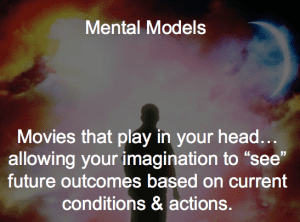 A mental model is an individual’s understanding of what is happening. A person can also “model” future events by using the “mind’s eye” to look into the future. This is the prediction I spoke of earlier.
A mental model is an individual’s understanding of what is happening. A person can also “model” future events by using the “mind’s eye” to look into the future. This is the prediction I spoke of earlier.
Commanders develop mental models based on information. Smoke and fire conditions; building construction and decomposition; speed at which the incident is progressing; and the survivability profile of civilians, are among the important information being gathered by a responder to form awareness. Additionally, it is important to gather information about personnel responding to and operating at an emergency scene.
Movies and Actors
 The process of predicting future events involves playing “movies” in your mind… watching events unfold in advance of them actually happening. These movies have actors that play out the scenes in the movie. The actors are the responders operating on the incident scene.
The process of predicting future events involves playing “movies” in your mind… watching events unfold in advance of them actually happening. These movies have actors that play out the scenes in the movie. The actors are the responders operating on the incident scene.
In order for someone to develop and maintain a “big picture” understanding of what is happening at an incident scene and subsequently making accurate predictions of future events, they must know and track the activities of the actors. This is where accountability can become a powerful situational awareness tool.
Putting the Pieces Together
 Imagine how much stronger an commander’s situational awareness will be when it comes to being able to make accurate predictions of future events when he or she knows:
Imagine how much stronger an commander’s situational awareness will be when it comes to being able to make accurate predictions of future events when he or she knows:
1. How many responders are on the scene.
2. How many responders are on each crew.
3. The quality of each crew.
4. The location of each crew.
5. The task being performed by each crew.
6. The progress being made by each crew.
Add to this the benefit of having this information updated on a periodic basis so that command essentially gets to “refresh” their understanding of the progress (or lack thereof) and compare it to the progress command was expecting to occur.
Dr. Gasaway’s Advice
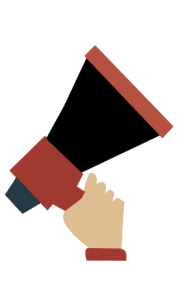 It is critical that we develop and implement safeguards to ensure, as best we can, the safety of our personnel operating in hazardous environments. Can we safeguard against EVERY conceivable detrimental outcome? No. This underscores the importance for having an accountability system.
It is critical that we develop and implement safeguards to ensure, as best we can, the safety of our personnel operating in hazardous environments. Can we safeguard against EVERY conceivable detrimental outcome? No. This underscores the importance for having an accountability system.
At all times a commander should have a good understanding of all personnel operating at an incident scene. Crew quantity, quality, location, function and progress. If a commander is uncertain of any of this information, at any time, the commander’s situational awareness about what is happening – and what will happen in the future – is in jeopardy.
Action Items
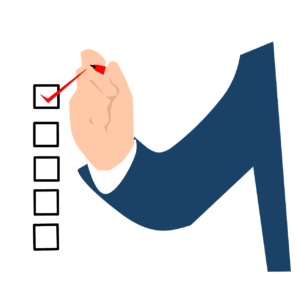 1. Discuss the method used by your department to track personnel operating at emergency scenes.
1. Discuss the method used by your department to track personnel operating at emergency scenes.
2. If your department does not have or use an accountability system, discuss how to develop and implement a tracking method for personnel.
3. Discuss how knowing where other crews are and what they are doing can improve the situational awareness for all personnel operating at an incident scene.
4. Discuss the importance and value of conducting personnel accountability reports on a periodic basis over the radio.
_____________________________________________________

If you are interested in taking your understanding of situational awareness and high-risk decision making to a higher level, check out the Situational Awareness Matters Online Academy.
CLICK HERE for details, enrollment options and pricing.
__________________________________
Share your comments on this article in the “Leave a Reply” box below. If you want to send me incident pictures, videos or have an idea you’d like me to research and write about, contact me. I really enjoy getting feedback and supportive messages from fellow first responders. It gives me the energy to work harder for you.
Thanks,

Email: Support@RichGasaway.com
Phone: 612-548-4424
SAMatters Online Academy
Facebook Fan Page: www.facebook.com/SAMatters
Twitter: @SAMatters
LinkedIn: Rich Gasaway
Instagram: sa_matters
YouTube: SAMattersTV
iTunes: SAMatters Radio
iHeart Radio: SAMatters Radio
